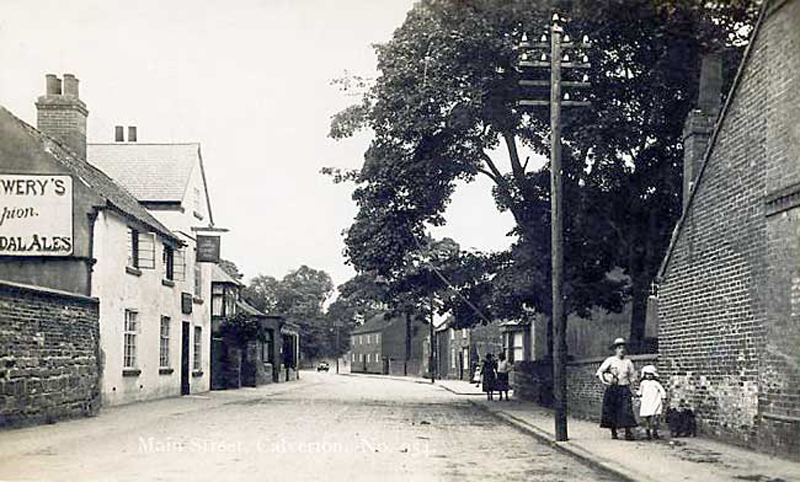Calverton
The Anglo Saxon settlement of Calverton, meaning 'farm where calves are reared' was recorded in the Domesday Book as having a church and a value of £1 10s 10d. The heathland around the village provided grazing pasture for sheep and an income for the villagers.

County: Nottinghamshire
Population (2001): 6903
Traditionally sheep reared in the area had long fibred fleeces that were particularly suited for knitting. This factor probably encouraged people to take up hand knitting, and later, William Lee to invent the knitting frame.
William Lee produced his first frame in 1589 in Calverton. When he failed to secure a patent from Queen Elizabeth I Lee took his invention to France and after a period of mixed success, he died there around 1612. Lee's brother, James, brought the frames back from France and set up an initial base in London. He soon disposed of the frames and returned to Nottinghamshire. Back in Nottinghamshire James worked with Lee's assistant, Aston, to make further improvements to the frame. An industry established itself in the area using frames produced by James and Aston.
Calverton was one of the many villages that developed a community of framework knitters. Farm labourers gained an extra income by combining their work on the land with work at the knitting frame. When times were difficult in one of the two jobs, the labourer could usually rely on the second as a fallback. In the early nineteenth century the lack of work among framework knitters led to the Luddite riots that swept across Nottinghamshire and the East Midlands. In February 1812 troops were sent to maintain law and order in villages such as Calverton.
Knitting and agriculture continued to support the population of Calverton throughout the nineteenth century. Some houses were built or altered to incorporate wide windows that provided framework knitters with light to work by. Towards the end of the century the use of hand frames was in decline as factories were built to house steam-powered machinery. Framework knitters in Calverton lost orders to firms in towns and cities and some people left the village to find work. The 1851 population of 1,500 inhabitants had fallen by 1940 to 1,000.
After World War II, coalmining in the area brought people back to the village and between 1951 and 1961 the population expanded to four times its 1951 level. With the subsequent decline of the coal industry, many of the village's current residents now commute to Nottingham and local towns.